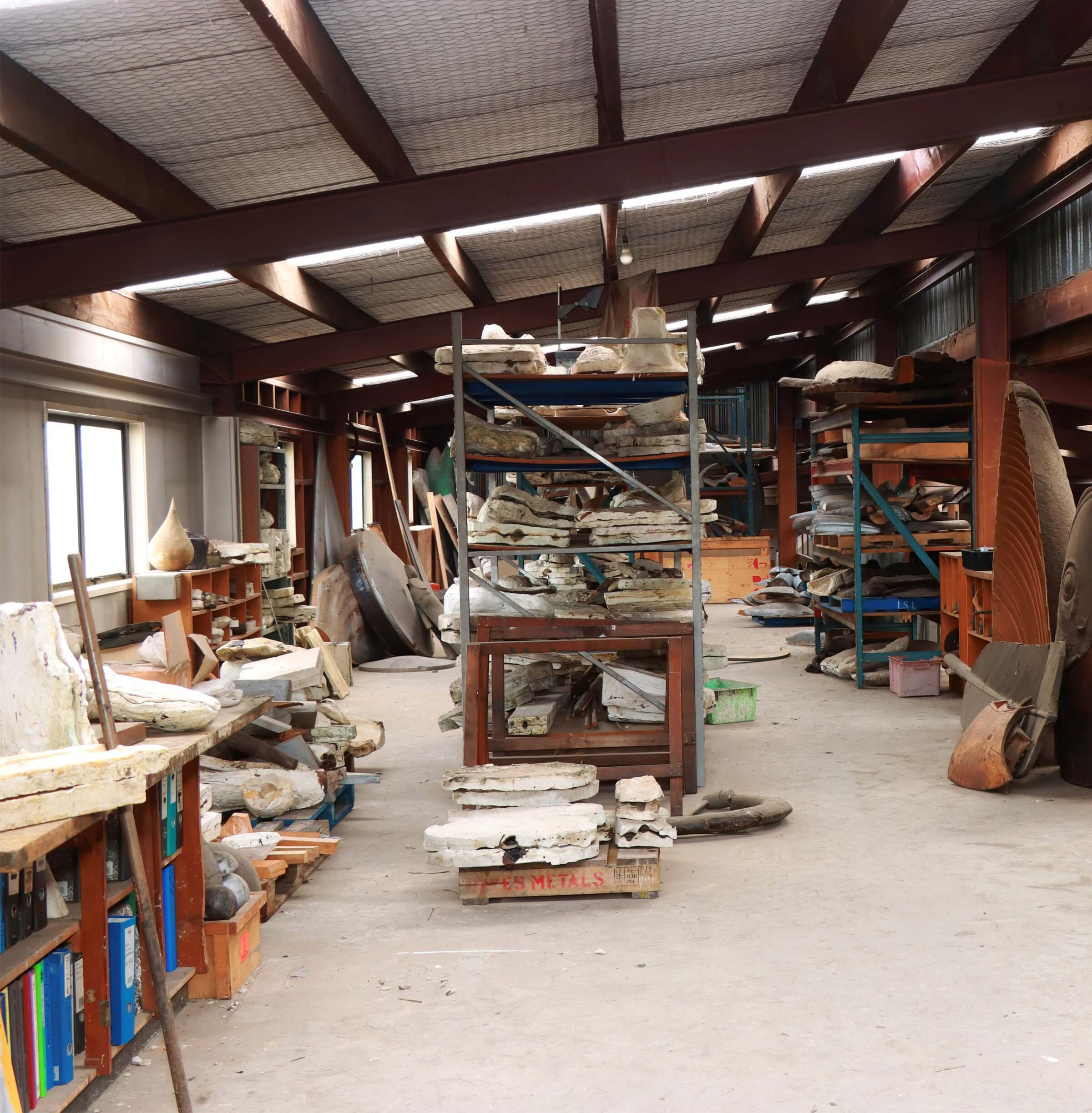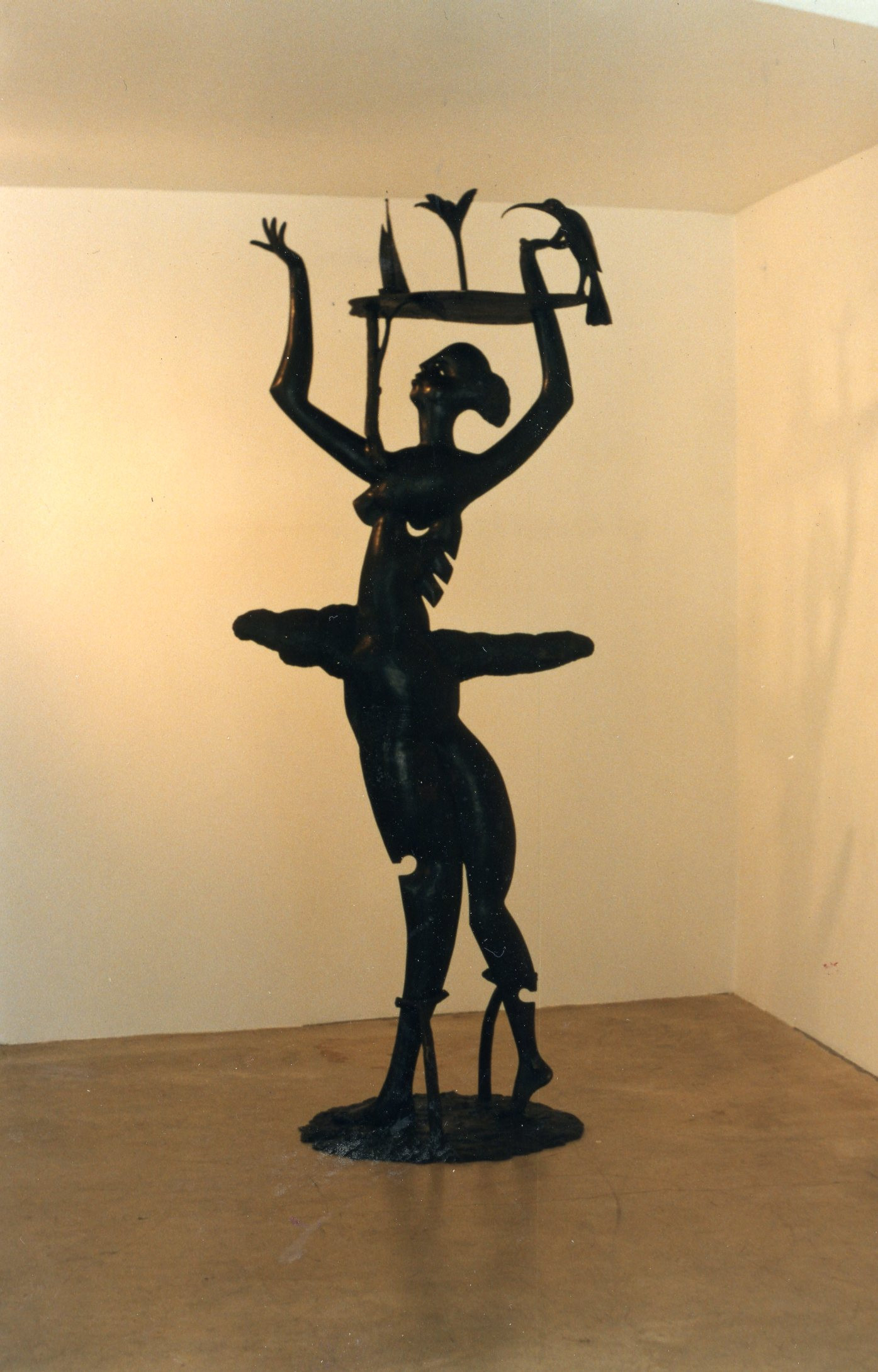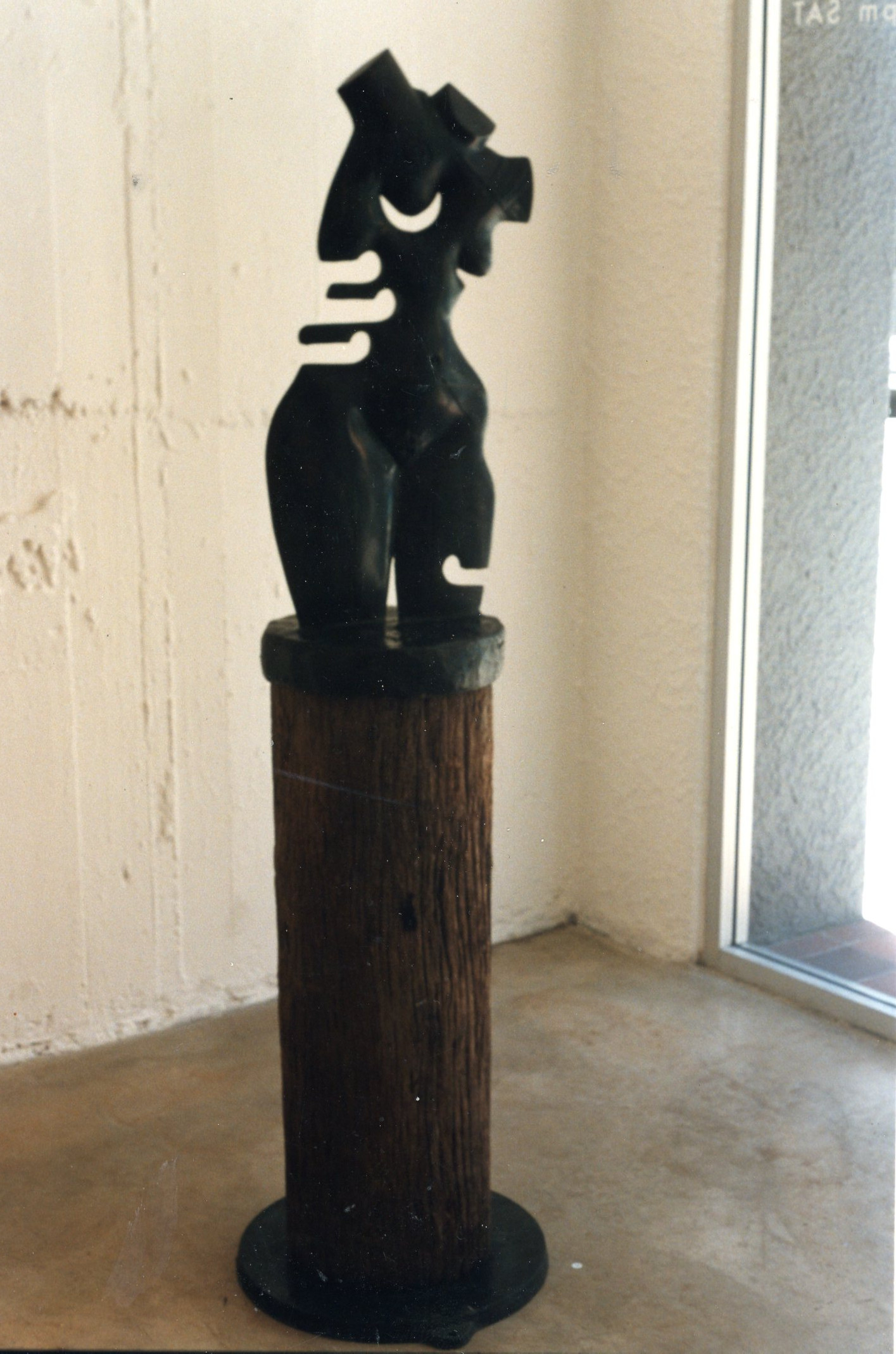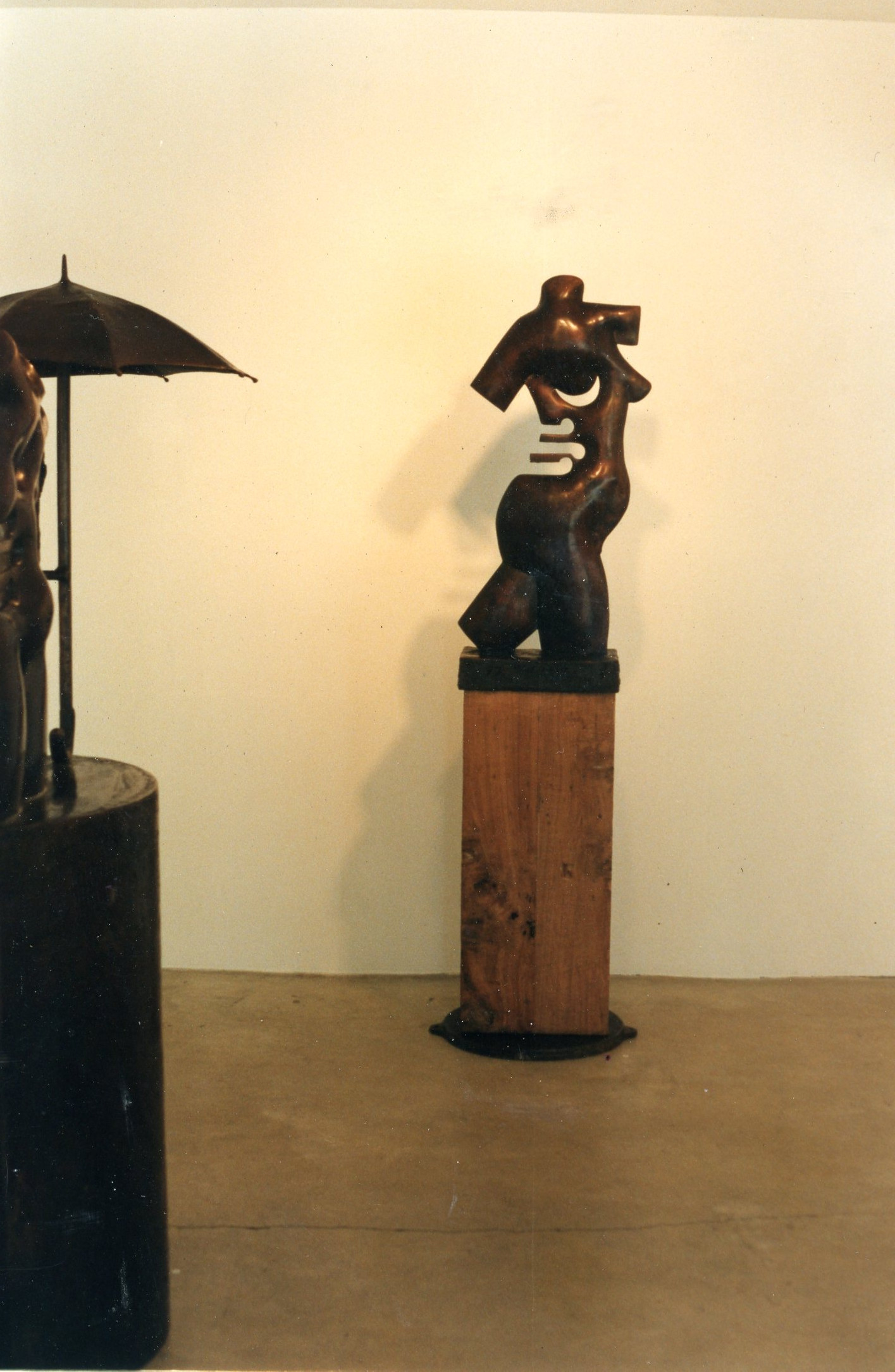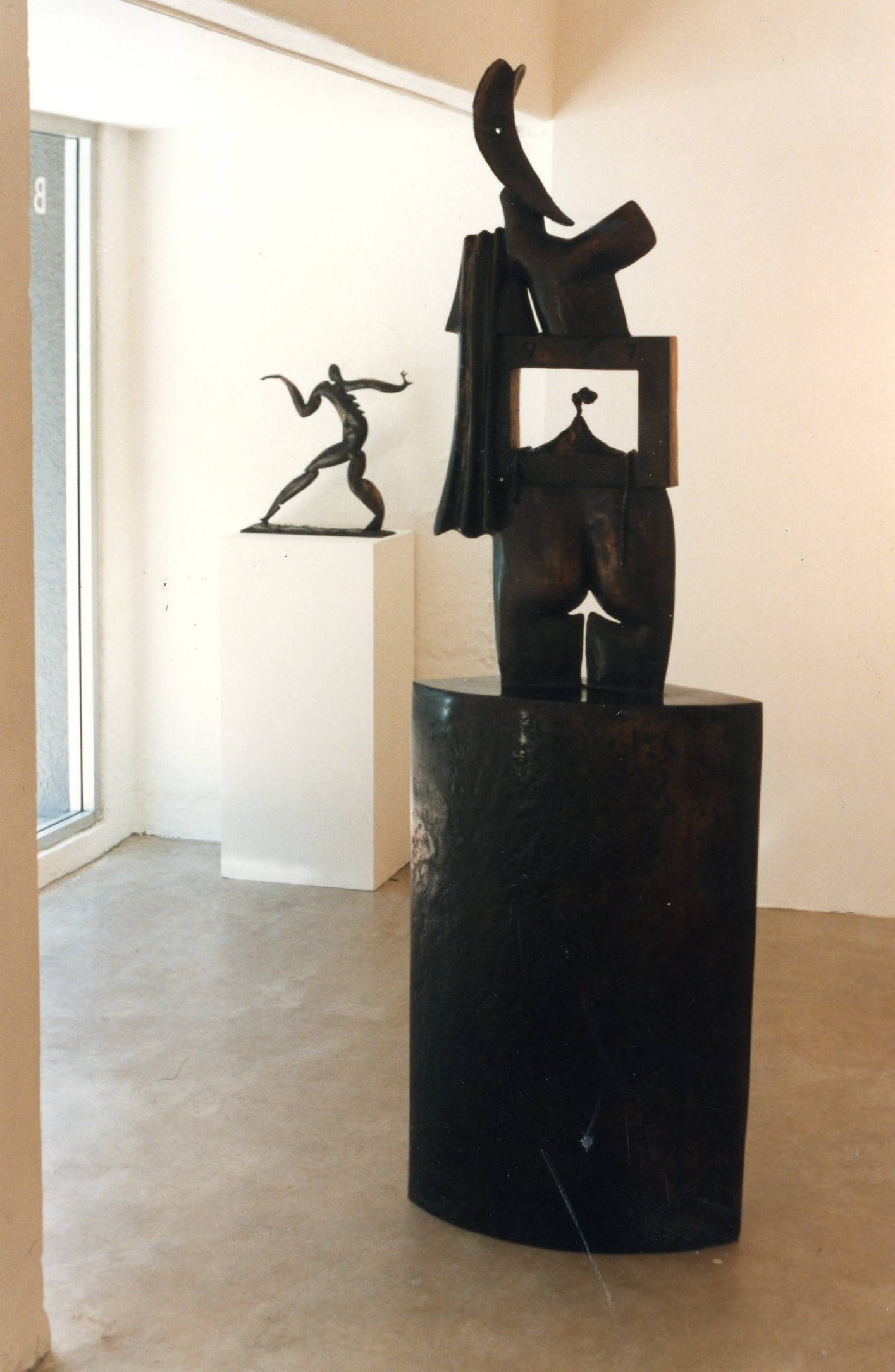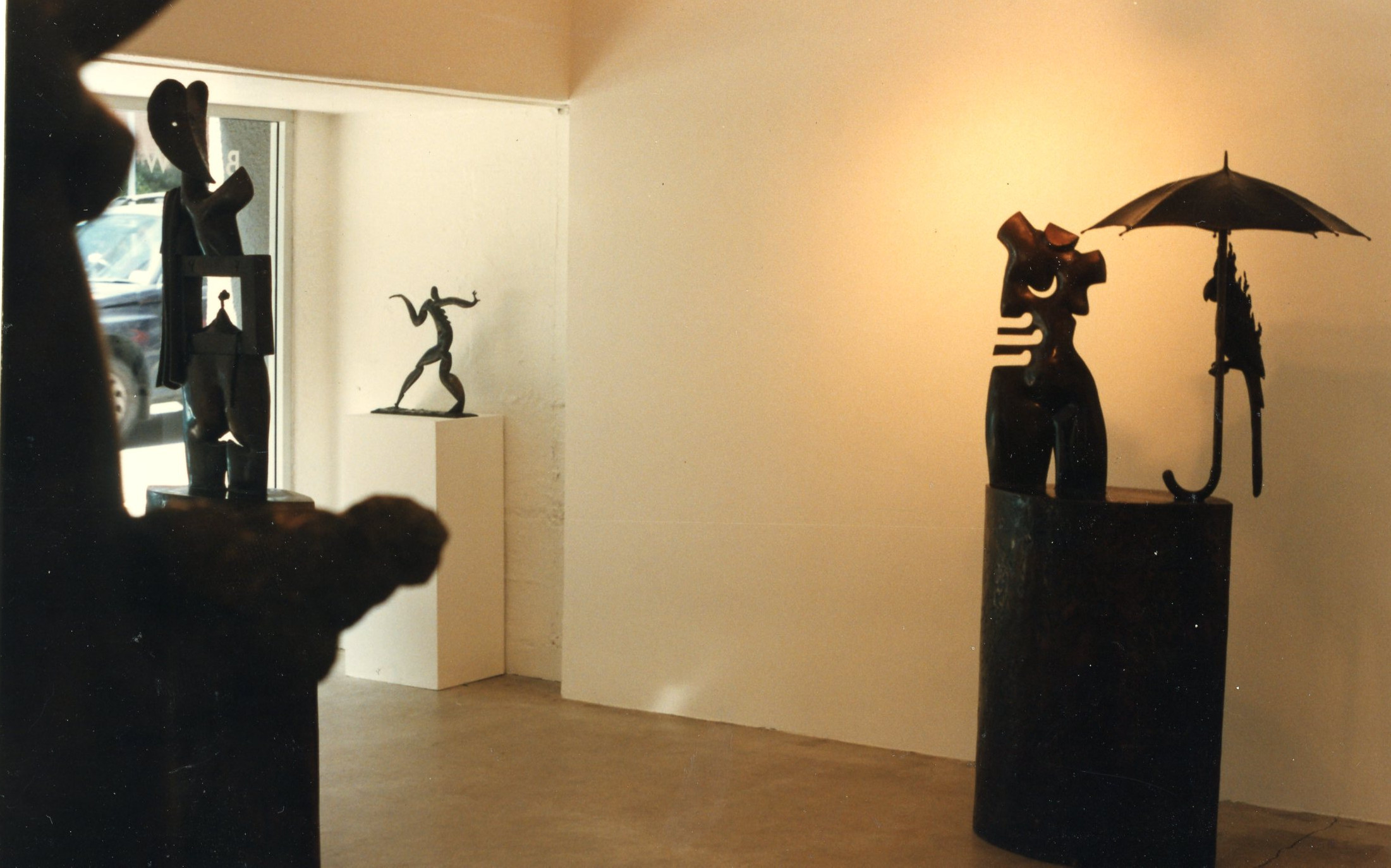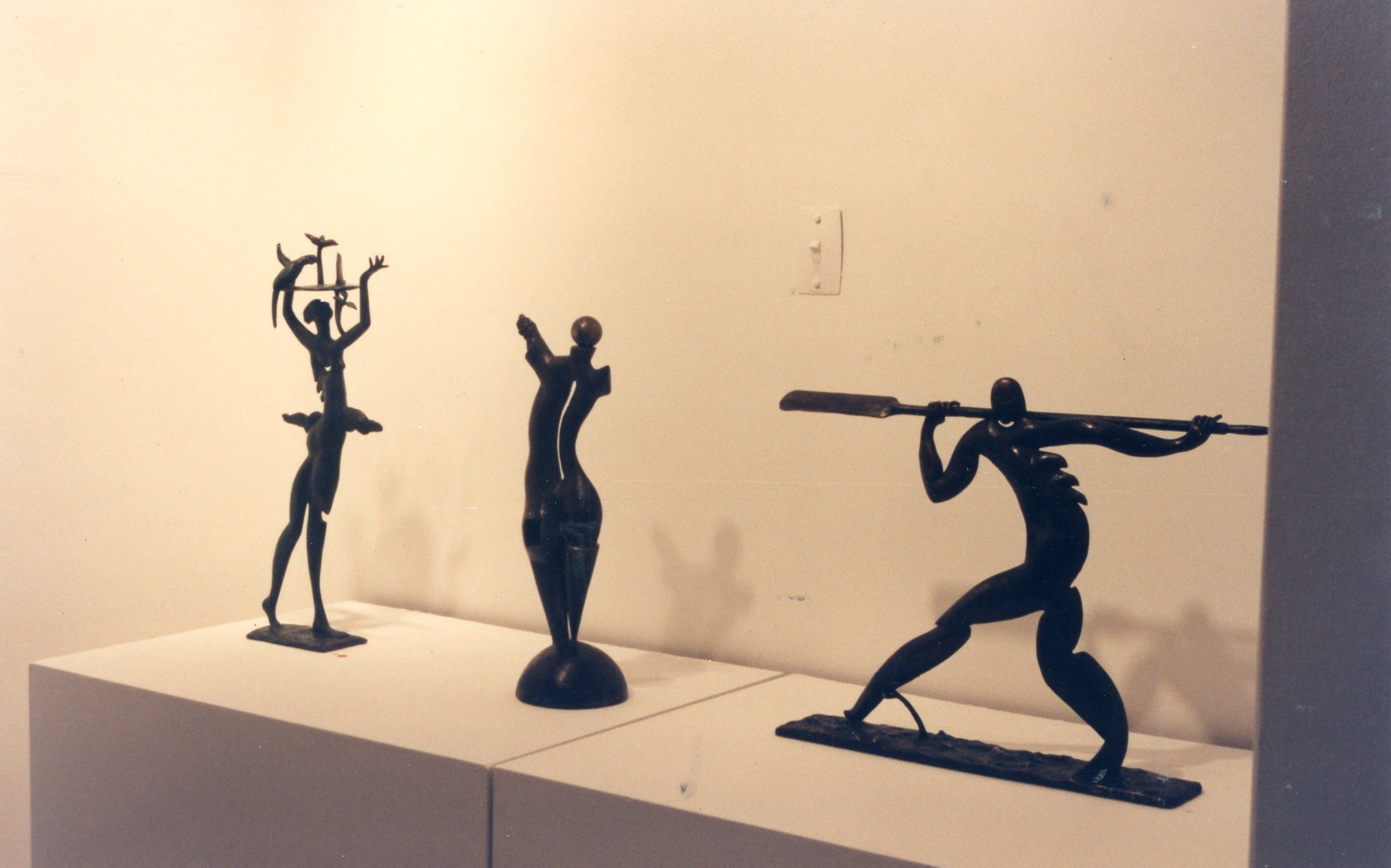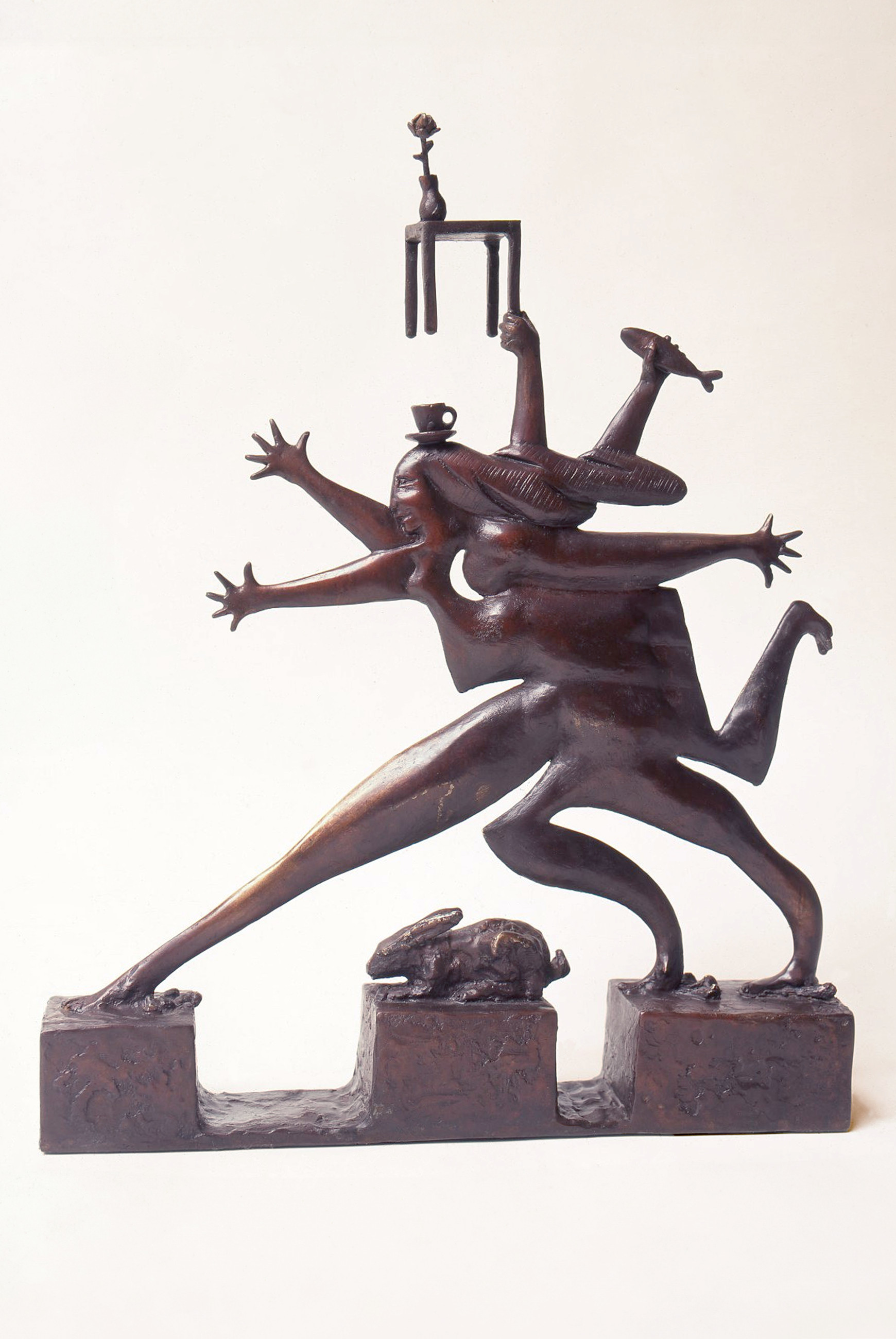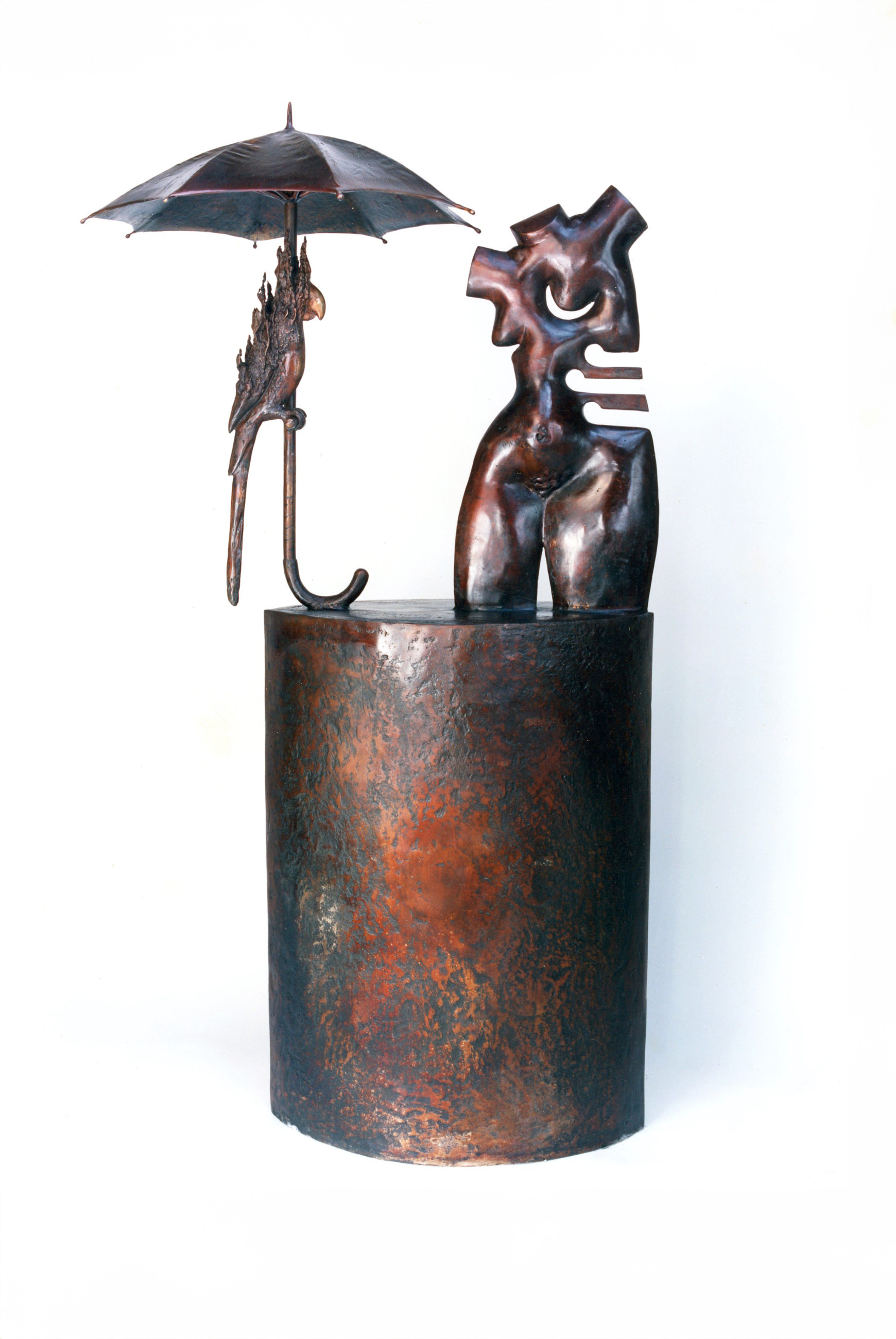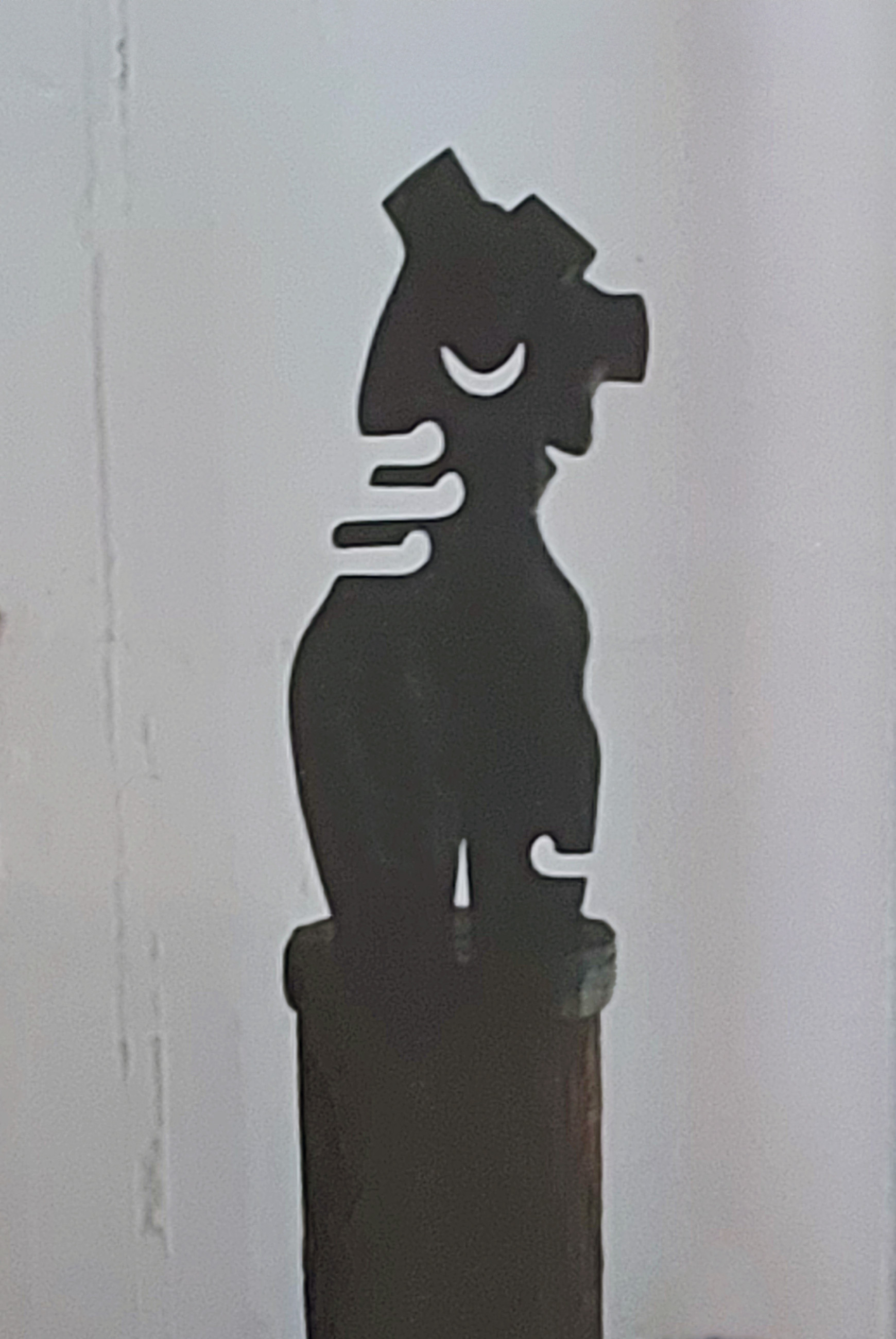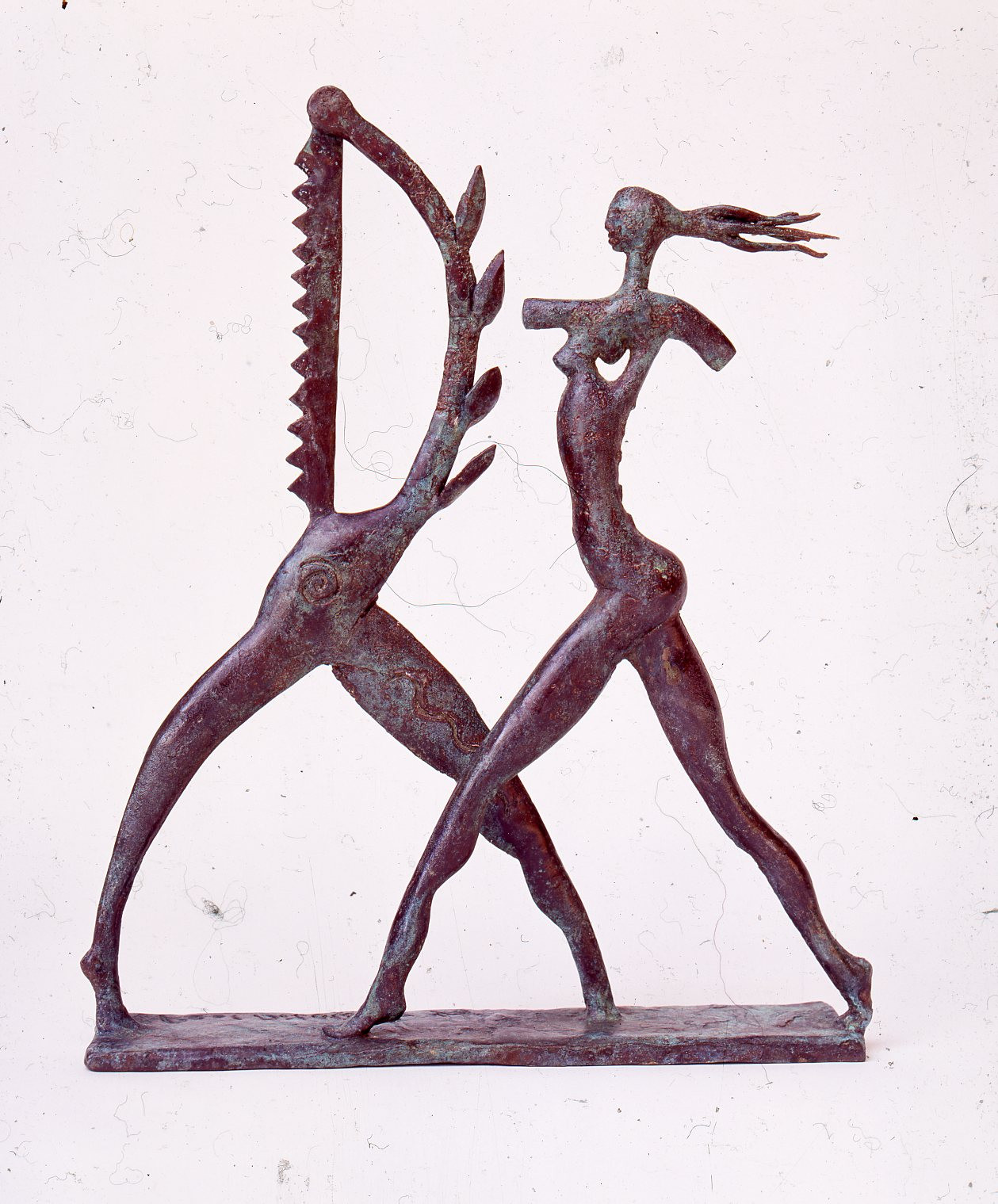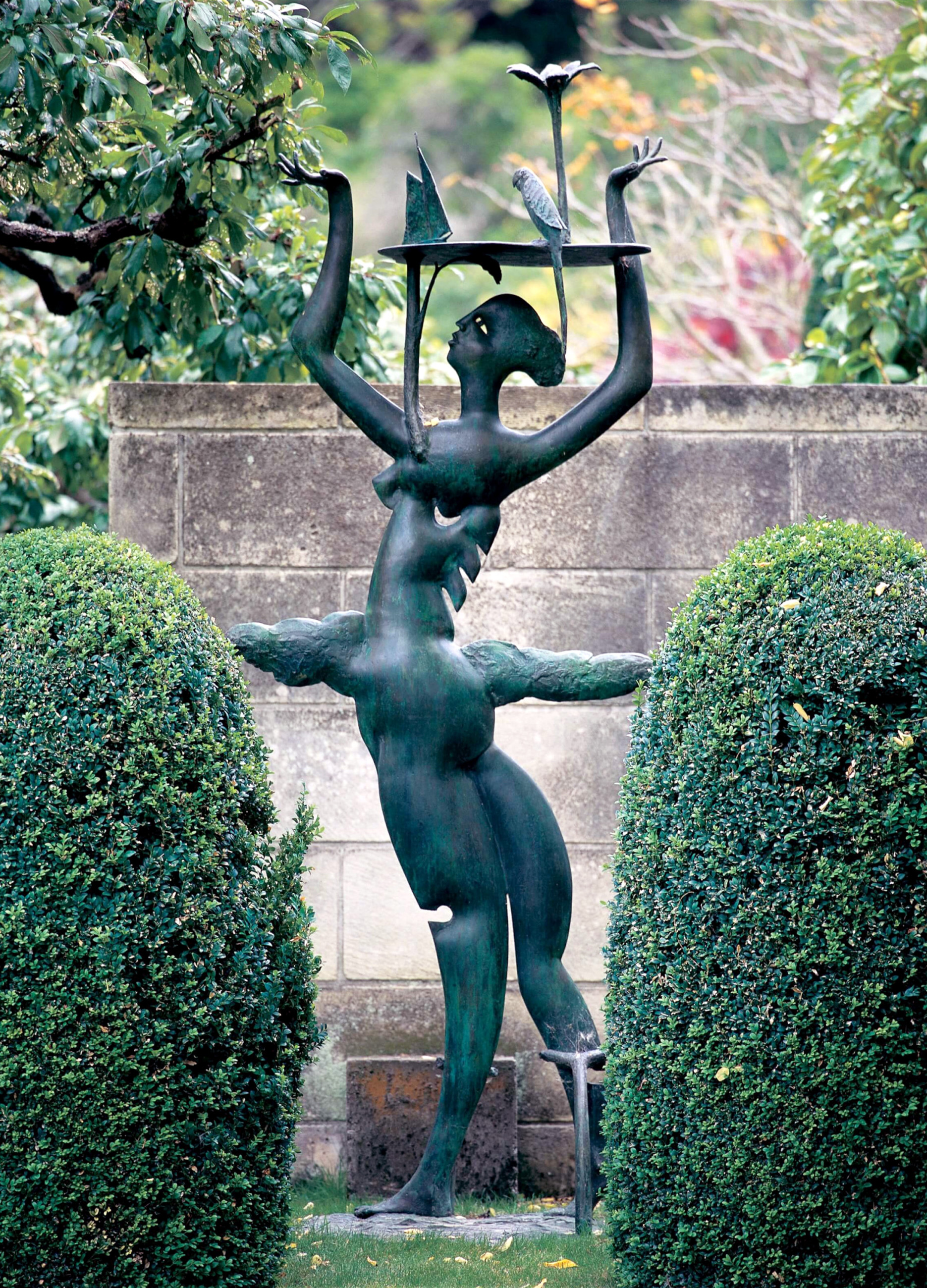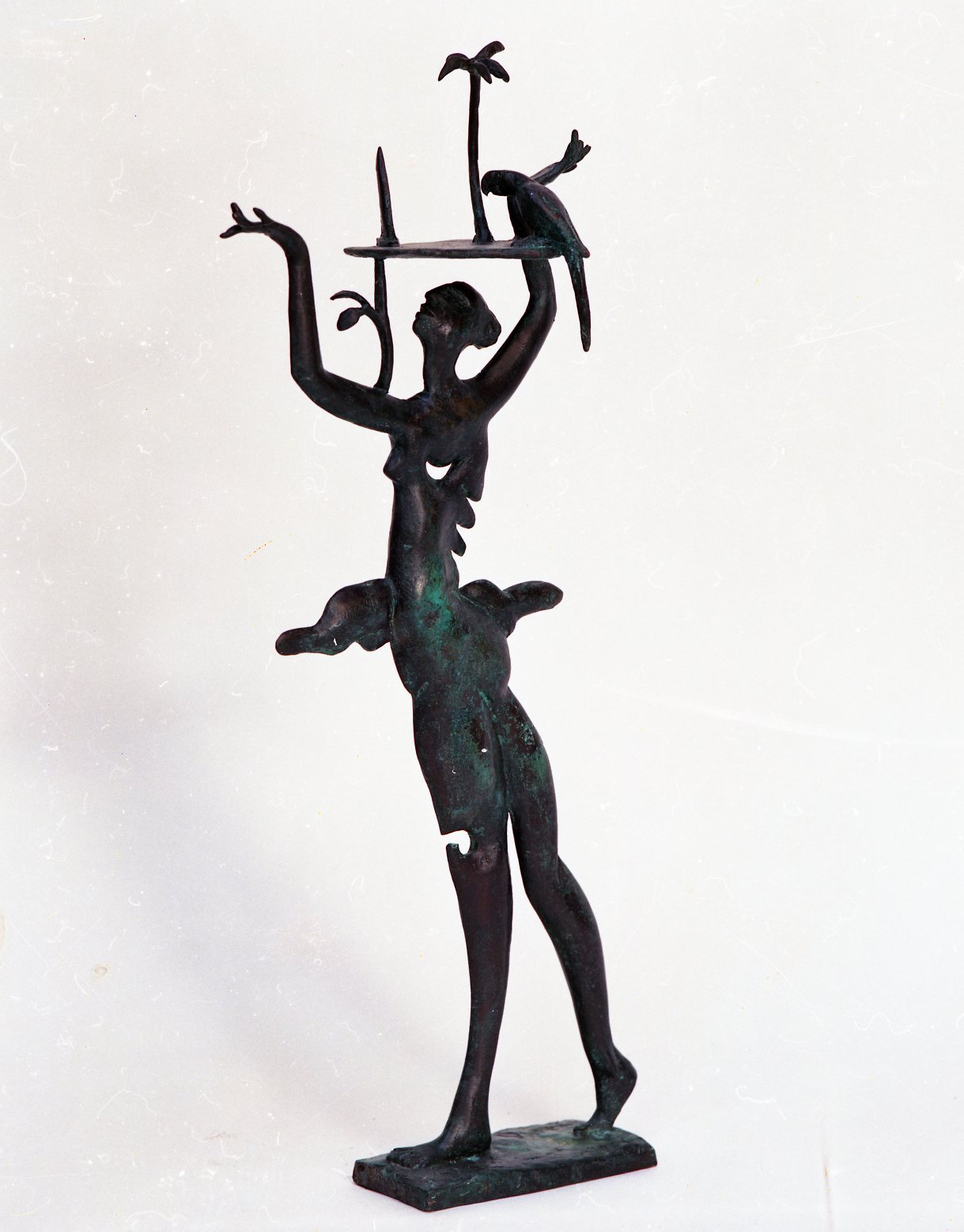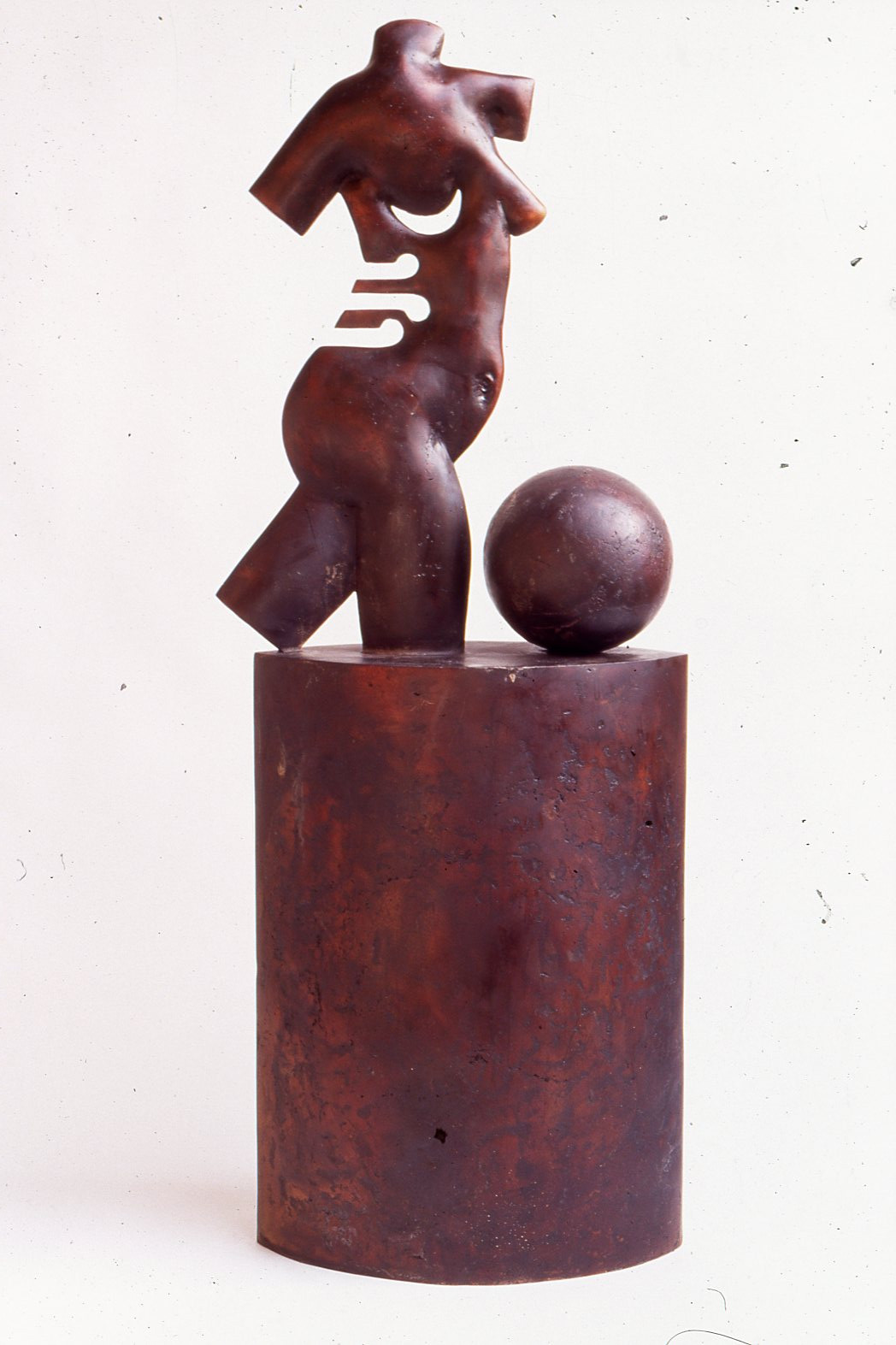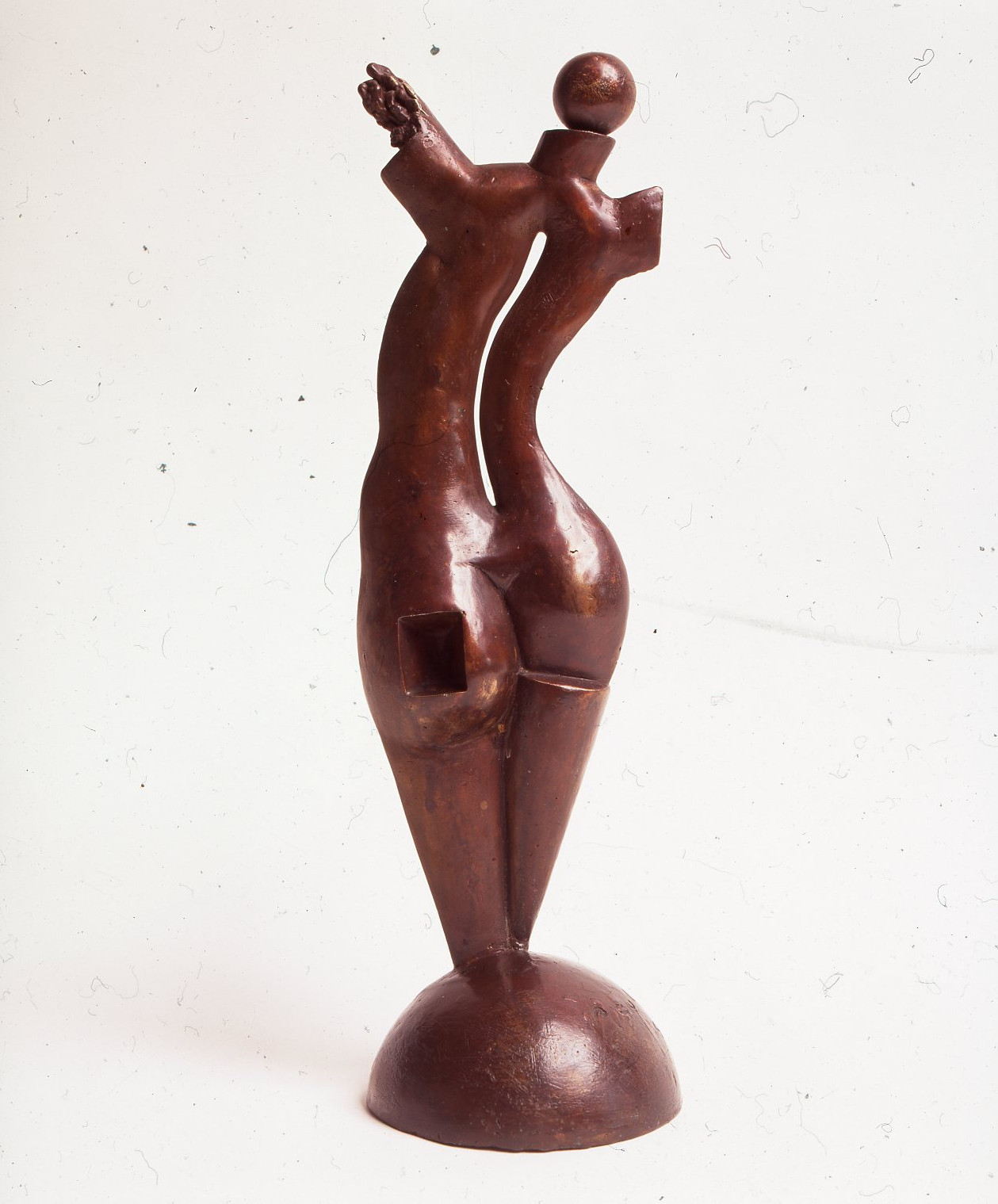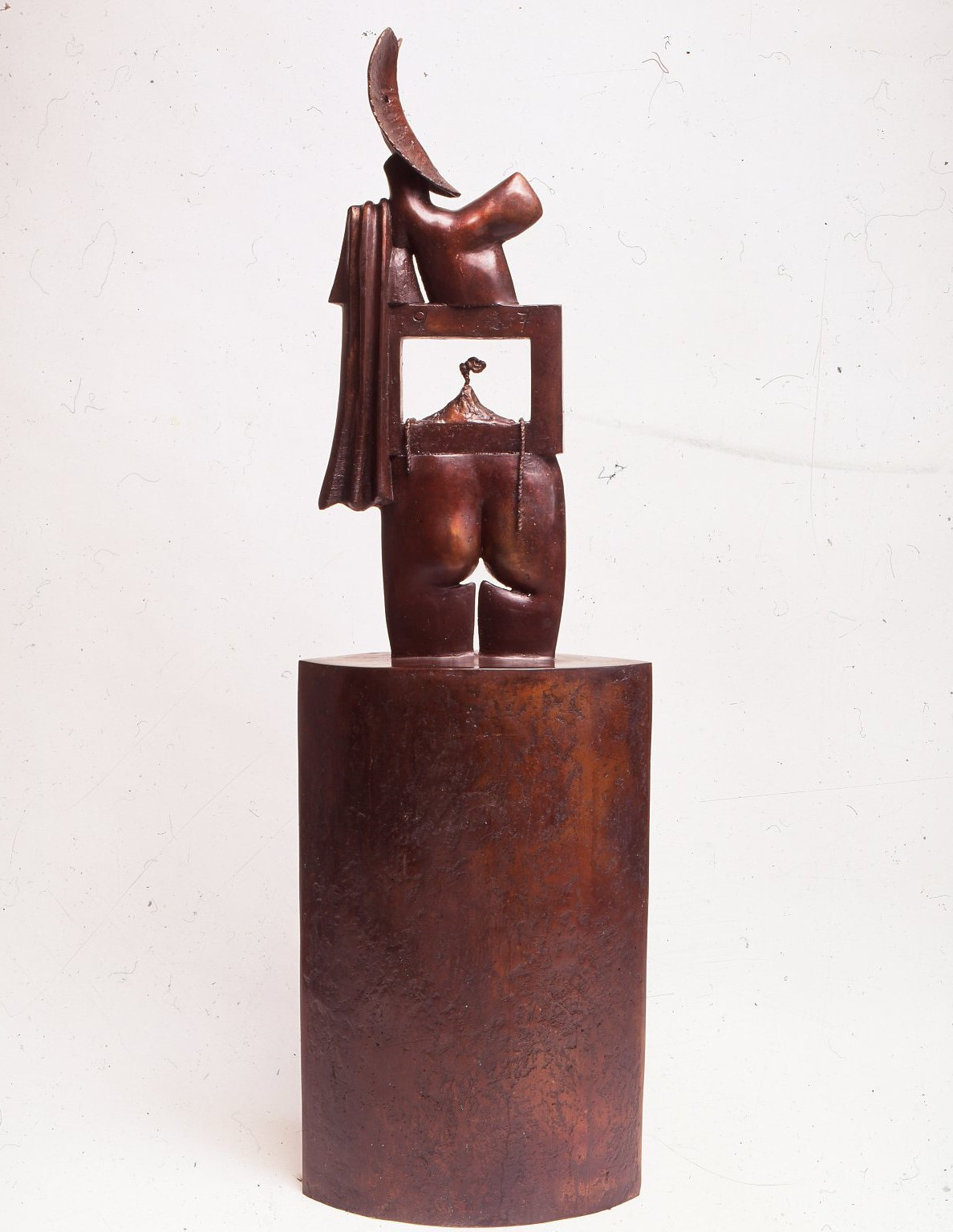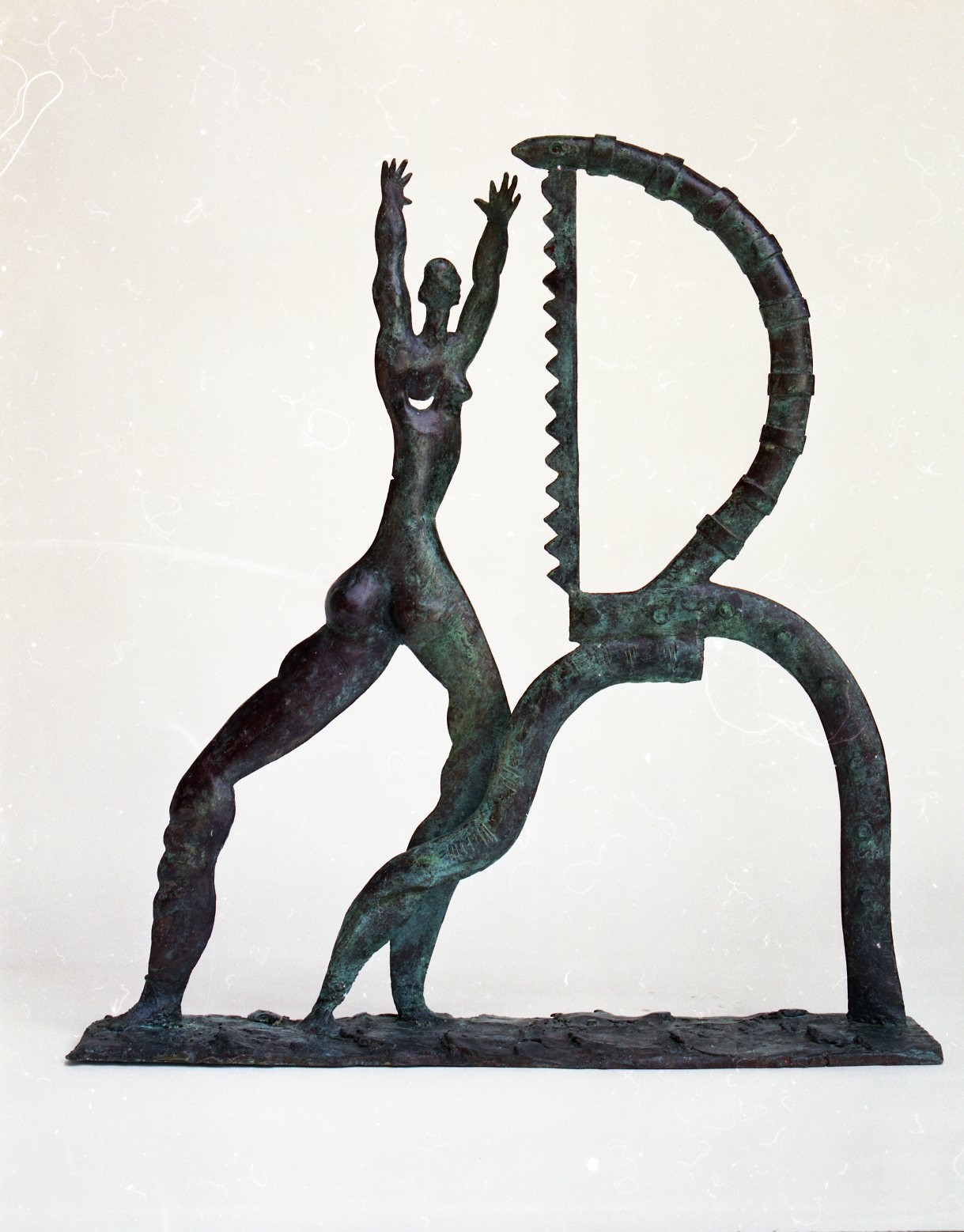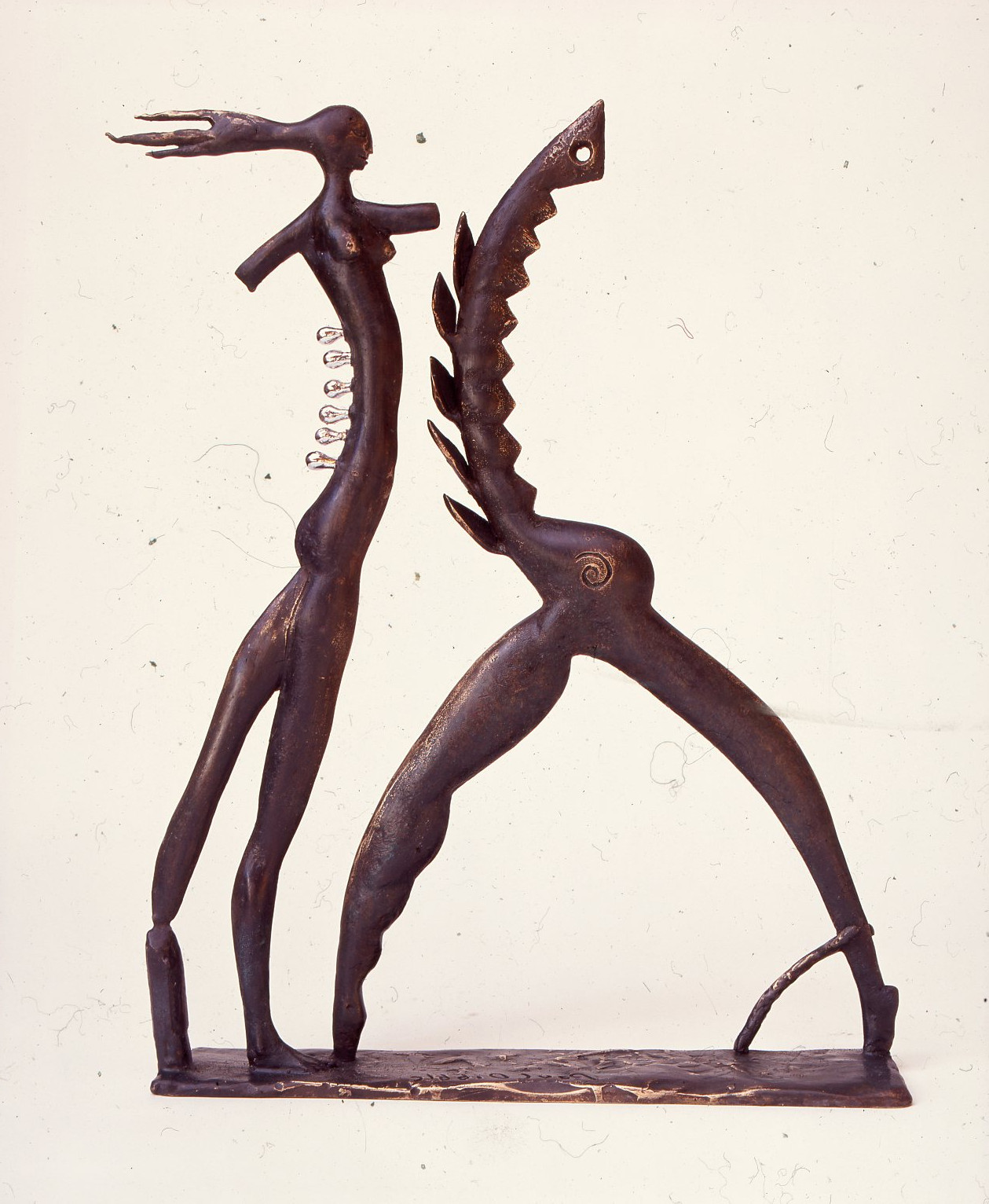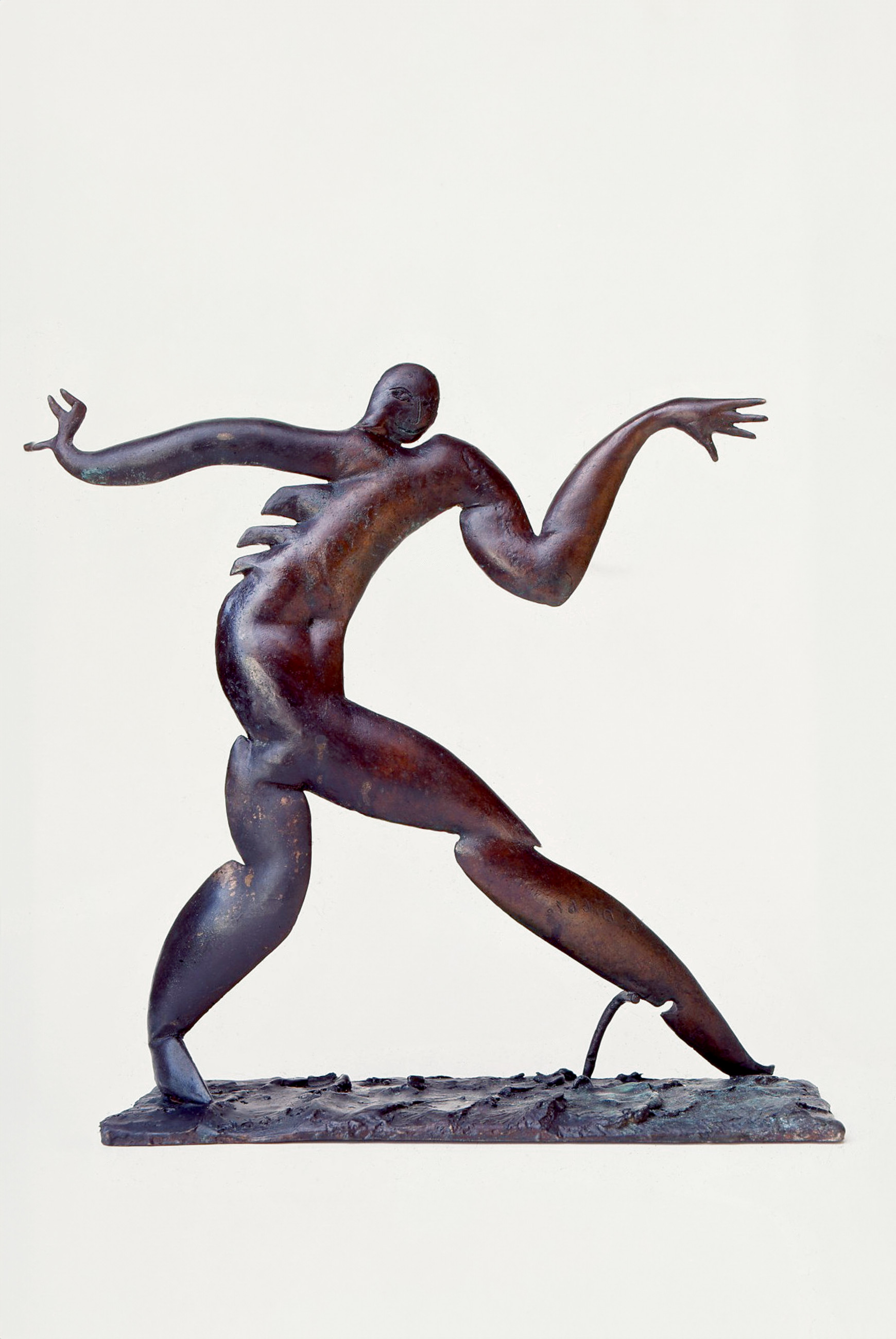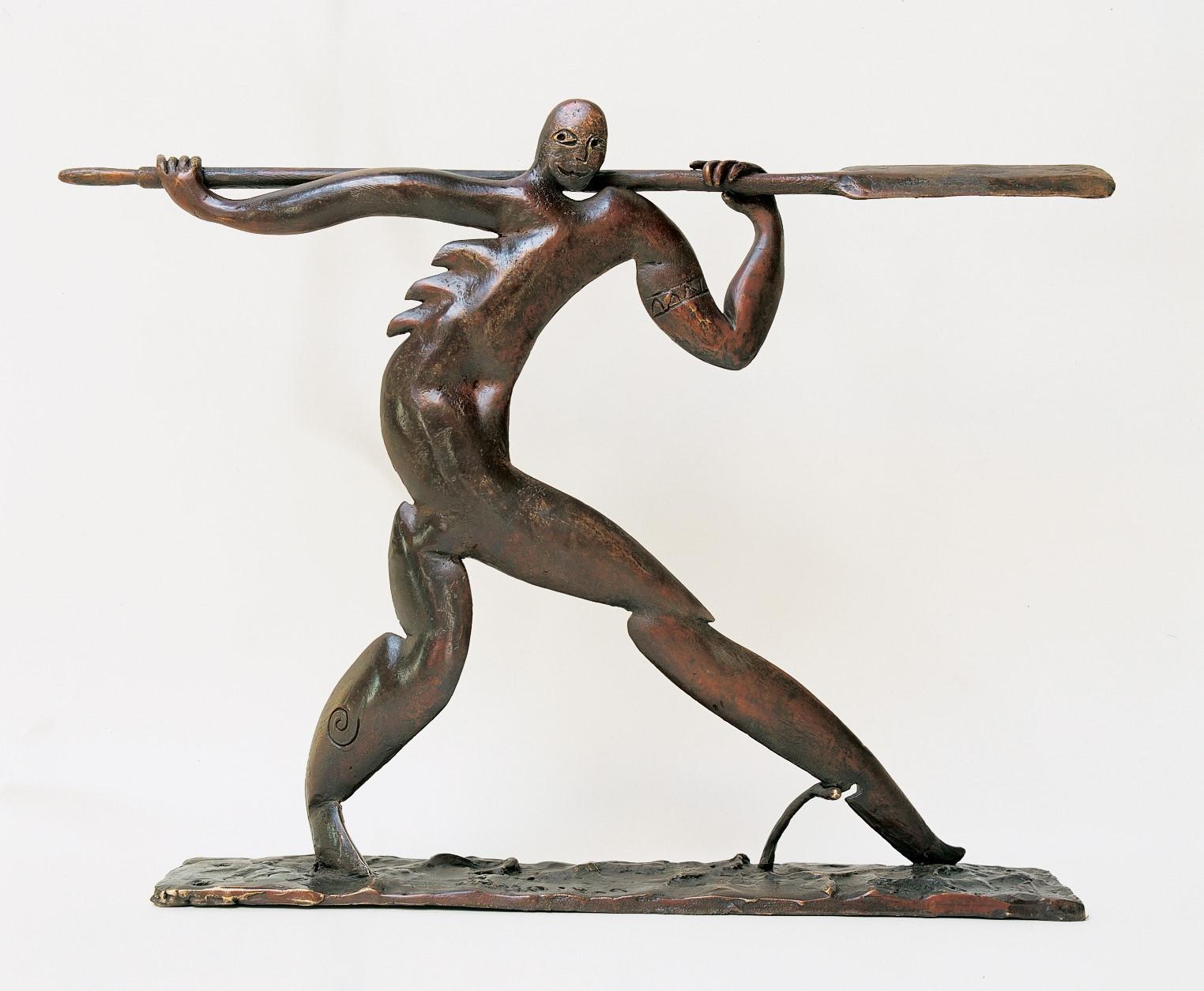November 3 - November 15, 1997 All About Edges, Bronze works by Paul Dibble
November 3 - November 15, 1997 All About Edges, Bronze works by Paul DibbleSolo, Bowen Galleries, Wellington
Text
The year 1997 was a pivotal one. In the brief wisp of a year a body of works were produced that had a distinction from both their predecessors and the next periods to come. They did have common features which linked them, categorizing them in a band not so tight stylistically. The most obvious is of course the edges, “All About Edges” as the artist named one of the exhibitions. These edges were formed from process (this method honed from works before his casting times began) and this was part of the ethos of this period. That evidence of the making of a piece was not something to be completely extracted or obliterated from the final form. The edges contradict the ‘front’ view which suggests the works will be larger and ‘in the round’ when they are almost two sided with a side view of thin, almost abstracted, forms.
Added to this was the overhang of the use of ‘assemblage’ to add in various icons and ideas to develop an overall concept. Here am I, 1997 is one of the important works of the year, showing these adaptations clearest. Not only has a big cloud been inserted around the woman’s body – the long white cloud of Aotearoa no doubt – but the piece of ocean she holds above her head, tentatively balanced by ad hoc sticks with leafy offshoots, has objects placed on it, almost as if on a table.
This assemblage element becomes less obvious with Green Tango model, 1997, and the two larger studies and several models. It is one of the other ‘greats’ of the year. This features a dance of the environmentalist, here a female character with leaves in her hair, with the saw of progress, a taunt of romance and seduction as both face off.
The work Busy Lady 1995, an earlier large work, was continued with smaller models right into 1997, a range of adaptations made as it was so loved. Its inspiration was, on a trip home from Wellington with the family, a stop off at a restaurant in Foxton and watching a waitress trying to get dishes out to a crowded room of diners on a busy night. This sight is combined with the futurism of Duchamp and his painting Nude Descending a Staircase – creating a localised version of a European art movement.
Under the Hula Moon, 1997 portrayed another dance. The hula partner is a giant fish with a dancer’s lei while the main performer is a version of a Picasso take on the African masks that inspired the modernist back around 1906.
These examples are what this year contained. Subject matter part selected on whim but a comment on figurative work made contemporary, and New Zealand adaptions on famous moments of European art.
